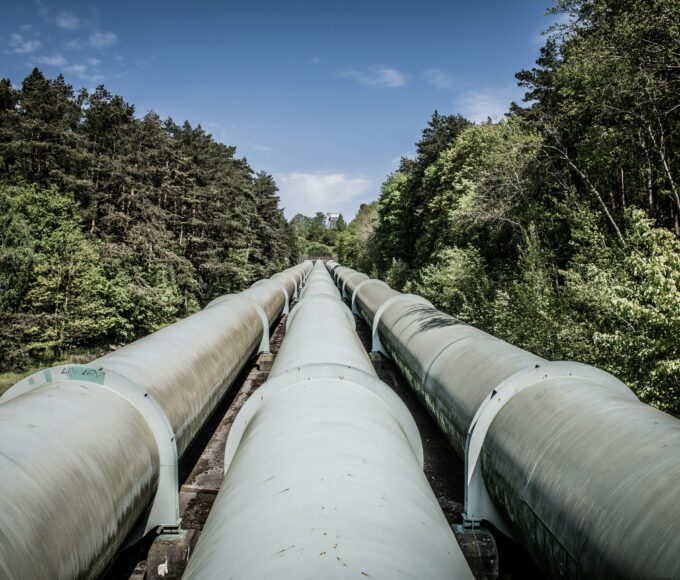- Home
- Features
- Startup Zone
- Projects
- Policies
- Shop
- Policies
- Projects
- Startup Zone
- Country Spotlight
- Analysis
- Tech
- Policies
- Projects
- Startup Zone
- Country Spotlight
- Analysis
- More
- Beyond the Kalashnikov: Africa’s Shift Toward Technology-Driven Warfare
- Afrail Express: Uniting a Continent on Rails
- AFRICA’S ENERGY CORRIDORS: CONNECTING POWER, PEOPLE, AND PROSPERITY
- Startup Lions Campus: Empowering Kenya’s Digital Generation
- L’Art de Vivre’s Le Paradis de Mahdia: Tunisia’s Model for Sustainable Luxury
- The Lobito Corridor: Rewiring Africa’s Trade Arteries Through Strategic Infrastructure
- AFRICA’S GREEN ENERGY TRANSITION: A BEACON OF HOPE FOR CLIMATE ACTION
- Dangote Refinery: Showcasing Africa’s Project Success Story
- AFRICA GREEN ECONOMY: ALL YOU NEED TO KNOW
- The Most Important Amicus Brief in the History of the World
- The Rise of Indigenous UAVs: Africa’s Drone Capabilities in Warfare and Surveillance
- AFRICA’S LARGEST OIL PRODUCERS: A COMPREHENSIVE OVERVIEW
- Beyond the Kalashnikov: Africa’s Shift Toward Technology-Driven Warfare
- Afrail Express: Uniting a Continent on Rails
- AFRICA’S ENERGY CORRIDORS: CONNECTING POWER, PEOPLE, AND PROSPERITY
- Startup Lions Campus: Empowering Kenya’s Digital Generation
- L’Art de Vivre’s Le Paradis de Mahdia: Tunisia’s Model for Sustainable Luxury
- The Lobito Corridor: Rewiring Africa’s Trade Arteries Through Strategic Infrastructure
- AFRICA’S GREEN ENERGY TRANSITION: A BEACON OF HOPE FOR CLIMATE ACTION
- Dangote Refinery: Showcasing Africa’s Project Success Story
- AFRICA GREEN ECONOMY: ALL YOU NEED TO KNOW
- The Most Important Amicus Brief in the History of the World
- The Rise of Indigenous UAVs: Africa’s Drone Capabilities in Warfare and Surveillance
- AFRICA’S LARGEST OIL PRODUCERS: A COMPREHENSIVE OVERVIEW
- Beyond the Kalashnikov: Africa’s Shift Toward Technology-Driven Warfare
- Afrail Express: Uniting a Continent on Rails
- AFRICA’S ENERGY CORRIDORS: CONNECTING POWER, PEOPLE, AND PROSPERITY
- Startup Lions Campus: Empowering Kenya’s Digital Generation
- L’Art de Vivre’s Le Paradis de Mahdia: Tunisia’s Model for Sustainable Luxury
- The Lobito Corridor: Rewiring Africa’s Trade Arteries Through Strategic Infrastructure
- Startup Zone
Top Insights
AfCFTA and Its Impact on Africa’s Infrastructure Policies

The African Continental Free Trade Area (AfCFTA), which came into force in 2019, represents one of the most significant advancements toward economic integration in Africa. It aims to establish a single market for goods and services across the continent, eliminating tariffs on 90% of goods and creating a unified economic bloc of more than 1.3 billion people. The AfCFTA is not merely a trade agreement; it is a transformative initiative that aspires to reshape Africa’s economic landscape, enhancing intra-African trade and fostering industrialisation. However, its successful implementation depends heavily on the state of Africa’s infrastructure, particularly in transport, energy, and logistics. This article examines the impacts of AfCFTA on Africa’s infrastructure policies, highlighting the urgent need for strategic investments and policy adjustments to support trade growth in the region.
The Goals of AfCFTA and Its Implications for Infrastructure
A Catalyst for Economic Growth
A key objective of the AfCFTA is to boost intra-African trade, which is expected to increase exponentially by 2030. According to the United Nations Economic Commission for Africa (UNECA), the agreement could generate a 28% surge in intra-African freight demand, compelling countries to elevate their infrastructure capabilities and expand logistical networks. To realise the economic benefits of AfCFTA, adequate and high-quality infrastructure is not just beneficial; it is imperative.
READ ALSO: Building Africa’s Cybersecurity Infrastructure: A Policy Gap
The Infrastructure Deficit Challenge
Despite its economic potential, Africa faces a daunting infrastructure deficit. The World Bank estimates that sub-Saharan Africa needs an annual investment of between $130 billion and $170 billion to address its infrastructural gaps. The severity of these deficiencies is compounded by underdeveloped transport networks, unreliable energy supply, and insufficient technological adoption, all of which obstruct trade facilitation and economic growth. The need for improvement in these domains has taken on increased urgency in light of AfCFTA, which aims to facilitate smooth cross-border commerce.
The Relationship Between AfCFTA and Infrastructure Policy
Creating Synergy Between Trade and Transport
The AfCFTA is primarily aimed at increasing trade among African nations, but its success largely hinges on the robustness of trade-related infrastructure. Inadequate transport infrastructure—characterised by poor roads, underdeveloped rail systems, and inadequate port facilities—hinders the ability of businesses to capitalise on the opportunities presented by the free trade area. As intra-African trade is projected to flourish, the strain on existing infrastructure systems will necessitate a paradigm shift in infrastructure policies, focusing on harmonious integrated planning of trade and transport.
Forecasting Transport Demand Growth
To understand how the AfCFTA could dramatically transform Africa’s infrastructure policies, it is essential to forecast demand across different modes of transport. The UNECA report suggests that the demand for transport services will change significantly by 2030. Road transport currently accounts for 76.7% of intra-African freight movement, while rail transport’s share is a mere 0.3%. These data points toward a logistical pathway that is heavily reliant on road transport, emphasising the need for substantial investment in road infrastructure to accommodate projected freight growth.
Scenario-based Forecasting
The UNECA study outlines four scenarios to model the varying degrees of economic growth, infrastructural investment, and policy implementation by AfCFTA signatories. The scenarios consider:
1. AfCFTA Implementation and Socio-Economic Development: How effectively governments can implement AfCFTA agreements.
2. Transport Services and Infrastructure: The readiness of countries to enhance their infrastructural frameworks.
Each scenario reflects how differing approaches can successfully or inhibit the AfCFTA’s objectives while reinforcing the critical link between trade facilitation and infrastructure development.
The Importance of Adequate Infrastructure Investment
Investment in infrastructure—which includes transport networks such as roads, rail systems, airports, and ports—is vital for achieving the goals of AfCFTA. The proper flow of goods necessitates reliable logistics systems. If countries fail to modernise and expand their transport networks, they risk missing out on the potential economic benefits of increased trade.
To support the anticipated growth in freight transport, Africa alone will need approximately 2 million trucks, over 100,000 rail wagons, and more than 100 vessels by 2030. This need drives the requirement for substantive resources for infrastructure investment.
Current Infrastructure Projects and the Role of Regional Cooperation
Existing Initiatives: A Roadmap to Success
Amid the challenges, various initiatives have been established to promote enhanced infrastructure development in Africa. One significant initiative is the Programme for Infrastructure Development in Africa (PIDA), which serves as a multi-sector program dedicated to upgrading transport, energy, water, and telecommunications across the continent. PIDA’s alignment with AfCFTA could provide a solid framework to facilitate concrete infrastructural improvement.
Moreover, the African Development Bank (AfDB) has reiterated its commitment to integrating the objectives of AfCFTA into its country and regional strategies. The AfDB primarily funds projects that support both public and private sectors, focusing on core infrastructure such as highways and energy systems.
Innovative Infrastructure Policies and Development
To address the infrastructural challenges that may hinder AfCFTA’s success, it is essential to adopt innovative ideas for financing, constructing, and maintaining infrastructure. This includes developing regulatory frameworks that support seamless access to essential services such as water, energy, and transport. Governments should also consider public-private partnerships (PPPs), which have proven effective in mobilising resources for infrastructure development while minimising national budget constraints.
Regional Corridor Development: A Case for Collaboration
Significant efforts have been made in developing regional transport corridors to facilitate trade. However, issues persist due to inadequate investment and maintenance. South Africa’s deteriorating infrastructure serves as a stark example; its energy, rail, and port sectors have been neglected, thereby pushing exporters to seek alternative routes through neighbouring countries’ ports, such as Maputo in Mozambique and Namibian ports.
This trend highlights the interconnectedness of regional infrastructure; as one country’s infrastructure deteriorates, it can severely impact its neighbours’ trade opportunities, further emphasising the need for collaborative infrastructure investment and maintenance strategies.
Governance Challenges and the Need for Policy Coordination
The Governance Aspect of Infrastructure Development
Infrastructure development requires effective governance that transcends national borders. Successful implementation of the AfCFTA necessitates cooperation among state parties to ensure regulations and policies are harmonised. Fragmentation and lack of coordination can undermine the intended benefits of the agreement.
One of the critical areas that AfCFTA can impact is customs and border administration. The various annexes of AfCFTA—including Customs Co-operation, Trade Facilitation, and Non-Tariff Barriers—highlight the principles that can facilitate smoother trade flows across borders. The establishment of the AfCFTA Sub-Committee on Trade Facilitation positions it as a useful platform for stakeholder engagement, including private sector participation, shaping infrastructure metals and improving trade processes.
Infrastructure Development Through Regional Integration
The necessity for a collective approach to infrastructure governance cannot be overstated. The lack of infrastructure is a continental problem demanding a continental solution. To realise the AfCFTA’s goals, African nations must prioritise regional integration and cooperation in investment efforts. Addressing infrastructural issues should be woven into the fabric of economic clustering initiatives, concentrating on sectors with the highest potential for collaborative growth.
Failures in governance at local and national levels result in inadequate infrastructure, affecting trade and investment. Therefore, enhancing the governance framework for infrastructure delivery will be essential as Africa strives toward achieving the aspirations encapsulated in Agenda 2063, a continental framework that aims to redefine the continent’s socio-economic landscape.
Infrastructure and Sustainable Development Goals
Socioeconomic Development and Sustainability
Infrastructure acts as a vital ingredient for socio-economic growth, providing the essential services that support health, education, and business. Many of the UN Sustainable Development Goals (SDGs) hinge upon the existence of reliable infrastructure, particularly in energy, water, and transport. Investment in infrastructure not only promotes economic integration but also drives sustainable development across the continent.
Improving access to reliable energy sources, enhancing transport connectivity, and ensuring the availability of quality water supplies are just a few domains where infrastructure development serves as a foundational pillar for achieving the SDGs.
The Nexus Between Trade, Infrastructure, and Climate Change
Africa’s infrastructural investment should also pursue green capitalism by prioritising climate-resilient projects and sustainable practices. Emphasising renewable energy solutions will catalyse solutions to Africa’s energy crisis while minimising environmental degradation. Programs invigorated by AfCFTA should incorporate technologies and practices that prioritise sustainable infrastructure.
Investments in green infrastructure could help facilitate trade, establish energy independence, and combat climate change, ultimately contributing to a more robust and sustainable African economy.
The African Continental Free Trade Area (AfCFTA) has the potential to reshape Africa’s economic landscape, but its success is intrinsically linked to the continent’s infrastructure development. Recognising that infrastructure is not merely a byproduct of economic growth, but rather a critical enabler for trade, investment, and sustainable development, necessitates an urgent call for innovative, cooperative, and cohesive policies across governments, public and private sectors.
To fully exploit the opportunities presented by AfCFTA, Africa must prioritise investments in infrastructure, with a focus on enhancing transport networks, energy solutions, and logistics capacity. This requires strategic foresight, considerable funding, and a united governance framework among African nations.
As we look to the future, the careful integration of AfCFTA into regional infrastructural strategies can create synergies that not only elevate intra-African trade but also stimulate economic diversification, generate jobs, and drive inclusive growth. Ultimately, the realisation of AfCFTA holds the promise of a transformed continent where the potential of its youth and resources will be harnessed for generations to come.
Recent Posts
Related Articles
The Battle Over Energy Subsidies in Africa: Who Wins and Who Loses?
Energy subsidies have long been a contentious topic in African economies, representing...
ByafricaprojectSeptember 24, 2025Pipeline Politics: The Future of Africa’s Oil and Gas Infrastructure
Africa’s oil and gas sector is undeniably at a pivotal crossroads, with...
ByafricaprojectSeptember 22, 2025The Impact of ESG Policies on Africa’s Oil Sector
In recent years, Environmental, Social, and Governance (ESG) considerations have surged in...
ByafricaprojectSeptember 19, 2025Free Trade Zones and Their Role in Africa’s Logistics Growth
Free Trade Zones (FTZs) are increasingly recognised as catalysts for logistics growth...
ByafricaprojectSeptember 11, 2025












